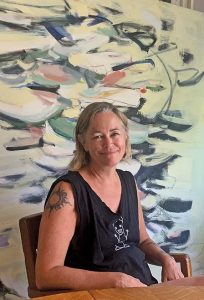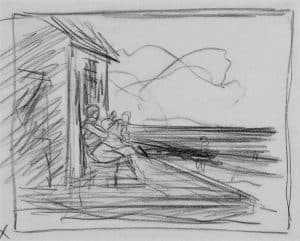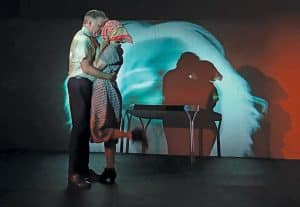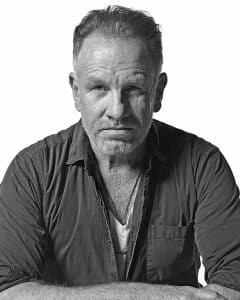by Lee Roscoe
Charles Kibby’s sensuous, glamorous, gorgeous sculptural lights are unique. Following the curves of nature, they manifest as shell-like, petal-like; like rock schists, assembled crystals; like horns, intestines, and also in spontaneous forms of their own born from nature, yet created by Kibby. Though some of his major influences, such as Isamu Noguchi and Dan Flavin, have worked with light and sculpture, they did so in plexiglass, paper, and less often, in stone, whereas Kibby has crafted his artifacts out of alabaster.
Glowing with gemlike translucency these alabaster illuminated sculptures are lit from within by LED strips. Like the elusive philosopher’s stone, which could turn base metals into gold as well as induce feelings of bliss, Kibby’s work has a mystery to it, an alchemic good vibe. Speaking to him by Zoom, in a room full of his table and sconce illuminators, he says he feels good. “Maybe it’s ‘woo woo’ but the crystal folk will tell you that there are different healing properties in calcite, which alabaster is. Calming, harmonious, good energy.”
Creating the stone bodies through which the light glows may take him 200 to 300 hours. He fashions foam into the shapes he wants. Then he cuts his stone to follow his pattern. “I am more interested in additive than subtractive sculpture,” he says. In other words, rather than chopping a figure out of stone, he chops stone into parts that will accrue into a form as he epoxies those pieces together.
He says the process he uses is called parametric design. “I’m not a mathematician, but my understanding is that parametric design is when units combine to make a whole. And by cutting these shapes and combining them in units of two-centimeter slabs, I am entering that realm,” he explains. “What really trips my trigger is about the language of structure throughout nature, from the macro to the microcosmic. All I do is mimic the assembly of forms through my pieces of stone and it ends up coincidentally mirroring the language of structure that you find in seashells, in nature, in galactic structures—like I said, one into the other. When I tie into that, it’s like a vibrational thing when you make that connection. It’s unconscious, I’m sure, to me.”
Kibby was born in Portland, Oregon, grew up in Alabama, and went west in his twenties, from Alaska to L.A. to Oregon, and back to California, remaining there, where he now lives in Palm Springs. He is descended from makers: potters, weavers, even a shop teacher. The artful handiness is in his genes. He’s been sculpting for 50 years. Trying to master this “three-dimensional language” has had a long history for him. “I’m a materials guy. I started in Oregon sculpting trees of fruitwood gathered in the Willamette Valley after the Columbus Day storm of 1962.” He moved on to stone, then became a historic preservationist of masonry, working with architects and contractors to create seismic upgrades on Frank Lloyd Wright and Julia Morgan structures, such as the L.A. Central library, making a good living with the help of his entrepreneur wife.
He‘s created art for himself from leftover bits of these restorations, such as a table from stone from the Oakland City Hall. “I am fascinated by what makes stone fall apart, what makes plywood bend.” His understanding of the way materials work has given him a kind of “substructure scan” of the body of materials, which helps him in his current art.

He will have his very first gallery representation at the Bowersock Gallery. “I’m a maker, not a marketer,” Kibby says, more interested in creating than in promoting his work, which, however, is in numerous private collections. Part of the Spring Harvest exhibition for the inaugural 2023-2024 season opening this weekend, Kibby names some of his six pieces an “Extraction series.” “Pieces start with a triangle and follow its path to other shapes through a sacred geometry,” explains Kibby.
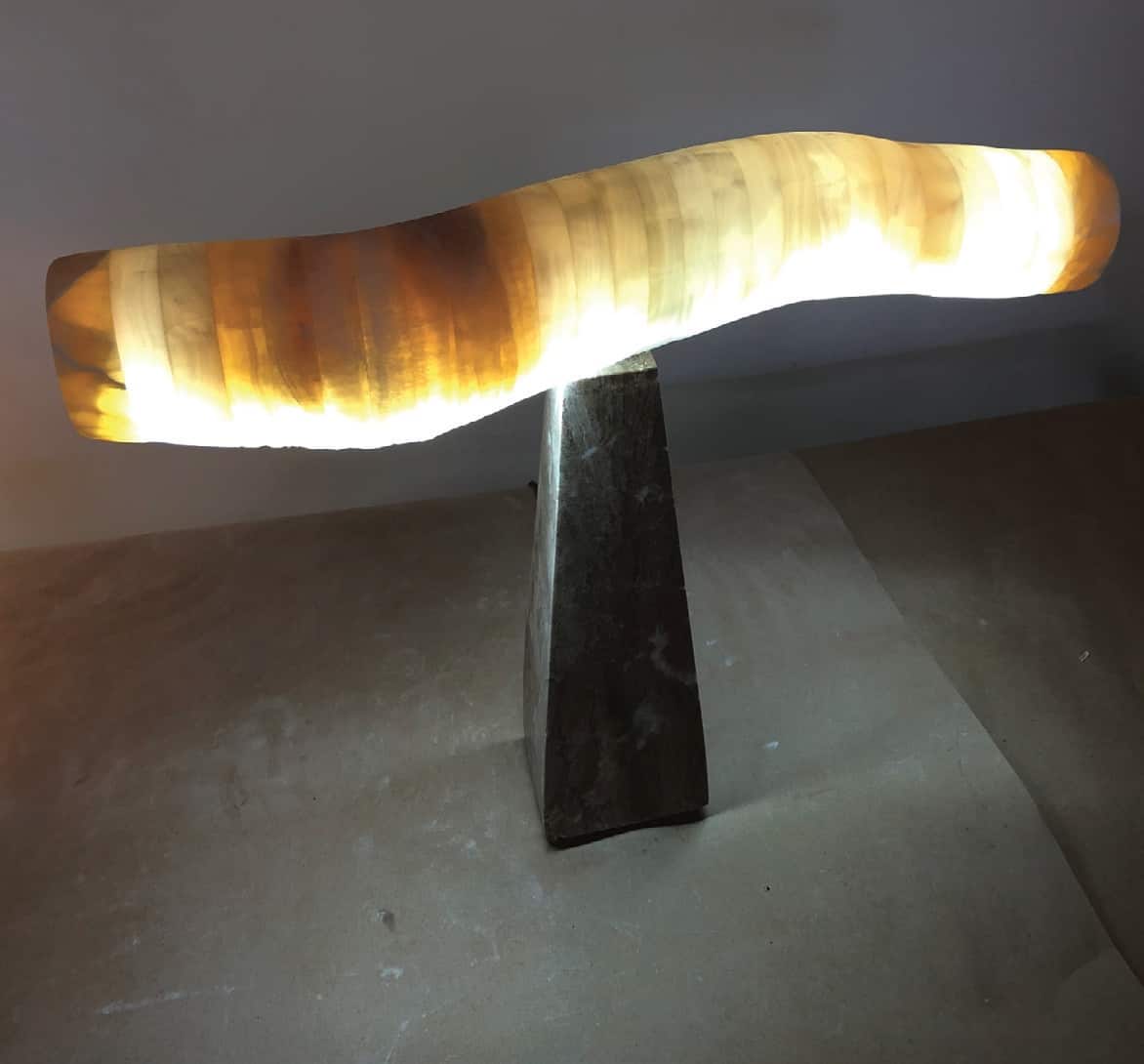
Some look a bit like celestial intestines, like cylindrical organs, but he says biology is not his intention per se (though he does say light transmits through alabaster, as if through the human body), but rather “morphogenesis.” That is, as he explains it, “the esoteric concept of how a thing evolves based on its use. For instance, a butterfly wing is shaped to a certain use, a spiral galaxy. Why does that happen?”

What is the commonality, the universal concept driving these shapes where form follows function. For him it lies in a Creator, in “the Force.” Again mystery, an inspirational mystery. And he adds, “There’s a line from Camelot: ‘Do I make myself obscure? Perfectly.’”
Charles Kibby’s work will be included in the season-opening group show Spring Harvest at Bowersock Gallery, 373 Commercial St., Provincetown, May 26 – June 15, with an opening reception on Friday, May 26, 7 – 9 p.m. For more information call 508.487.4994 or visit bowersockgallery.com.




